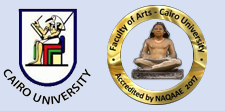عنوان المقال عربي
التسامح اللساني في الحضارة العربية والإسلامية
Document Type
Original Study
Keywords English
Linguistic Tolerance, the Other, Arab and Islamic civilization, Ibn Hazm, Al-Biruni
كلمات مفتاحية عربي
التسامح اللساني, الآخر, الحضارة العربية والإسلامية, البيروني, ابن حزم
Abstract English
There is no doubt that the Arabic & Islamic civilization has known linguistic diversity through openness to the other, which has resulted in the establishment of a sophisticated civilized dialogue, one of which was translation and transmission. This was evident during the 4th and 5th centuries AH, when scholars exerted all their energies and strived to transfer science and translate concepts from several languages into Arabic, and this was followed by scientific creativity and cognitive distinction in various sciences, knowledge and arts.This openness is falls within an intellectual and religious system that makes the linguistic diversity and the difference of languages one of the cosmic signs, and linguistic tolerance a human appearance, where every messenger sent by God to his people with their languages. To achieve one of the most important mission and communicative functions, which is the demonstration function.In this regard, this research falls, which attempts -through a descriptive and analytical approach -to elucidate the manifestations of linguistic tolerance through the following three points:1st: Linguistic tolerance in the Qur’an: by highlighting examples of several discursive situations, the most important of which are between the prophets and their people. All of them aim to achieve the demonstration function, and highlight the extent of fraternal bonding between them.2nd: Linguistic tolerance in the position of Prophet Muhammad and the position of his companions on the multilingualism.
الملخص العربي
لا شك أن الحضارة العربية والإسلامية قد عرفت تنوعًا لسانيًّا، من خلال الانفتاح على الآخر، ممّا أفرز إقامة حوار حضاري راقٍ كانت إحدى وسائله الترجمة والنقل. وقد بدا هذا جليًّا خلال القرنين الرابع والخامس الهجريين، في بذل العلماء كل طاقاتهم وسعيهم الحثيث من أجل نقل العلوم وترجمة المفاهيم من عدة لغات إلى العربية، وأعقب ذلك إبداع علمي وتميز معرفي في مختلف العلوم والمعارف والفنون.ويتنزَّل هذا الانفتاح ضمن منظومة فكرية ودينية، نتجت من كون التنوع اللغوي واختلاف الألسن آيةً من الآيات الكونية، والتسامح اللساني ملمحًا إنسانيًّا، حيث ما من رسول إلا وأرسله الله سبحانه إلى قومه بلسانهم؛ لتحقيق أحد أهم الوظائف الرسالية التواصلية وهي الوظيفة البيانية.وفي هذا الصدد يندرج هذا البحث في استجلاء مظاهر التسامح اللساني من خلال النقاط الثلاث الآتية:1 - التسامح اللساني في القرآن الكريم: من خلال إبراز نماذج من عدة وضعيات تخاطبية أهمها بين الأنبياء وأقوامهم؛ تهدف جميعها إلى تحقيق الوظيفة البيانية، وتبرز مدى الترابط الأخوي بينهم. 2 - التسامح اللساني في السيرة النبوية: وفي موقفه ﷺ وموقف أصحابه من التعدد اللغوي.3 - التسامح اللساني في الخطاب العلمي قديمًا: ونعرض فيه نماذج من مواقف علمائنا قديمًا في مجال التسامح اللساني تنظيرًا وممارسةً، فمن المنظرين للتسامح اللساني ابن حزم، وممّن تعاطوا هذا المفهوم الراقي أبو الريحان البيروني، ما جعل هؤلاء يقدّمون الصورة المشرقة والمشرّفة عن حضارة أسهمت في البناء الفكري والعلمي للإنسانية.
Recommended Citation
bueabdallah, lieabaydi muhamad
(2023)
"Linguistic tolerance in Arab and Islamic civilization,"
Journal of the Faculty of Arts (JFA): Vol. 83:
Iss.
3, Article 4.
DOI: 10.21608/jarts.2023.185402.1324
Available at:
https://jfa.cu.edu.eg/journal/vol83/iss3/4
Digital Object Identifier (DOI)
10.21608/jarts.2023.185402.1324
Accept Date
2023-05-24
Publication Date
7-1-2023

